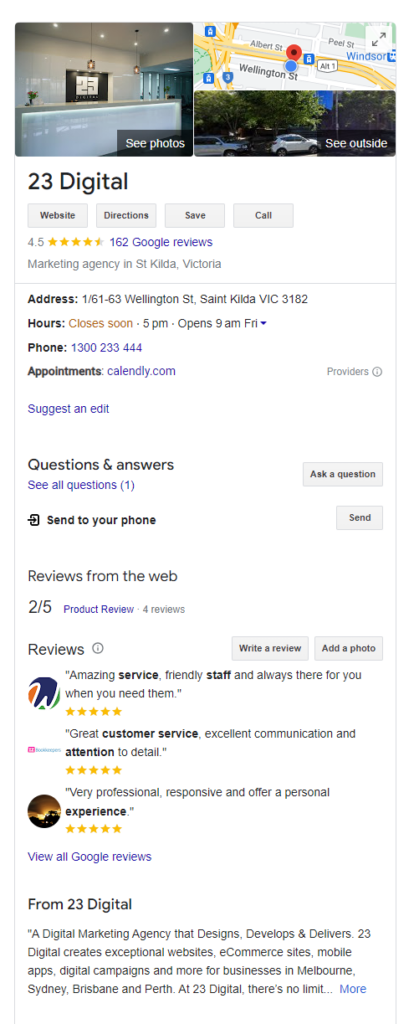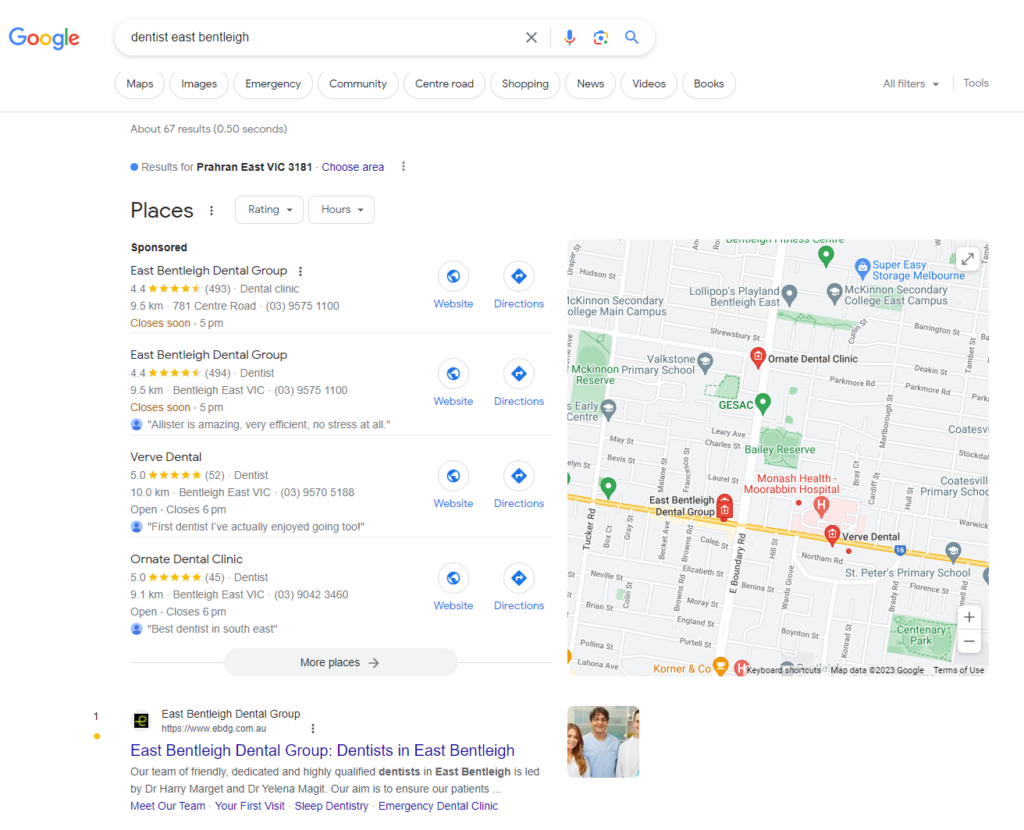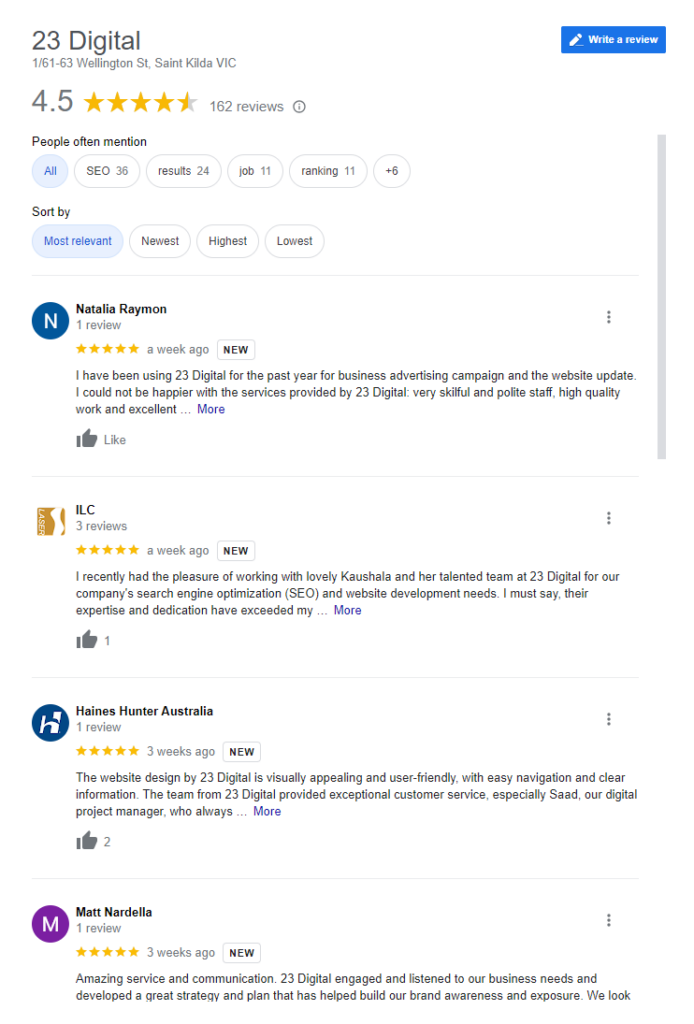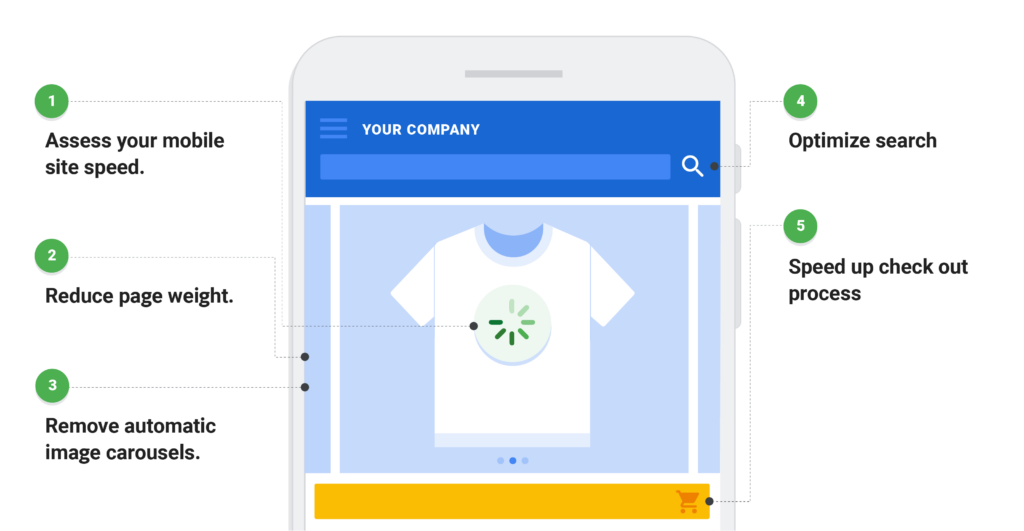Local SEO is crucial for businesses that serve a specific geographic area.
It helps improve visibility in local search results and drives relevant traffic to your physical store or website.
In this comprehensive guide, we’ll walk you through the process of focusing on local SEO, complete with example screenshots to illustrate each step. Let’s get started!
Step 1: Optimise Google My Business (GMB) Listing
Google My Business is the foundation of local SEO.
Claim and verify your GMB listing, and ensure that all business information, such as name, address, phone number, and hours of operation, is accurate and up-to-date.
Example Screenshot of optimised GMB Page:
Step 2: Select Relevant Local Keywords
Identify local keywords that potential customers might use to find businesses like yours.
Use keyword research tools like Google Keyword Planner or SEMrush to discover relevant local search terms.
Example Screenshot:
Step 3: Optimise On-Page SEO for Local
Incorporate your chosen local keywords naturally into your website’s meta tags, content, and URLs.
Create location-specific landing pages to target different areas you serve.
Step 4: Build Citations and Local Listings
Consistent NAP (Name, Address, Phone number) information across online directories and citation sites is crucial for local SEO.
Submit your business information to reputable local directories.
Step 5: Encourage Customer Reviews
Positive customer reviews on platforms like Google, Yelp, and Facebook boost your credibility and local search rankings.
Encourage satisfied customers to leave reviews, and respond to reviews professionally.
Step 6: Use Local Structured Data Markup
Implement local structured data markup (Schema.org) on your website to provide search engines with essential business information.
This can lead to rich snippets in search results.
Step 7: Optimise for Mobile Devices
Mobile optimisation is critical for local SEO, as many local searches occur on mobile devices.
Ensure your website is mobile-friendly, with fast load times and responsive design.
Step 8: Engage in Local Link Building
Acquire backlinks from local sources, such as local news websites, community organisations, and event pages. Engaging in local events and sponsorships can lead to valuable local backlinks.
Step 9: Use Local Business Posts and Updates
Stay active on your GMB listing by posting regular updates, events, and offers. Utilise Google Posts to share relevant content and attract potential customers.
Step 10: Monitor and Analyse Local SEO Performance
Regularly monitor your local SEO performance using tools like Google Analytics and Google Search Console. Track local search rankings, website traffic, and customer interactions.
Conclusion
Focusing on local SEO can make a significant impact on attracting local customers to your business.
By following this comprehensive guide and leveraging local SEO best practices , you can improve your local search rankings, increase foot traffic to your store, and strengthen your online presence within your community.
Remember to stay consistent, provide excellent customer service, and adapt your local SEO strategy based on performance insights.
Happy optimising for local search!











